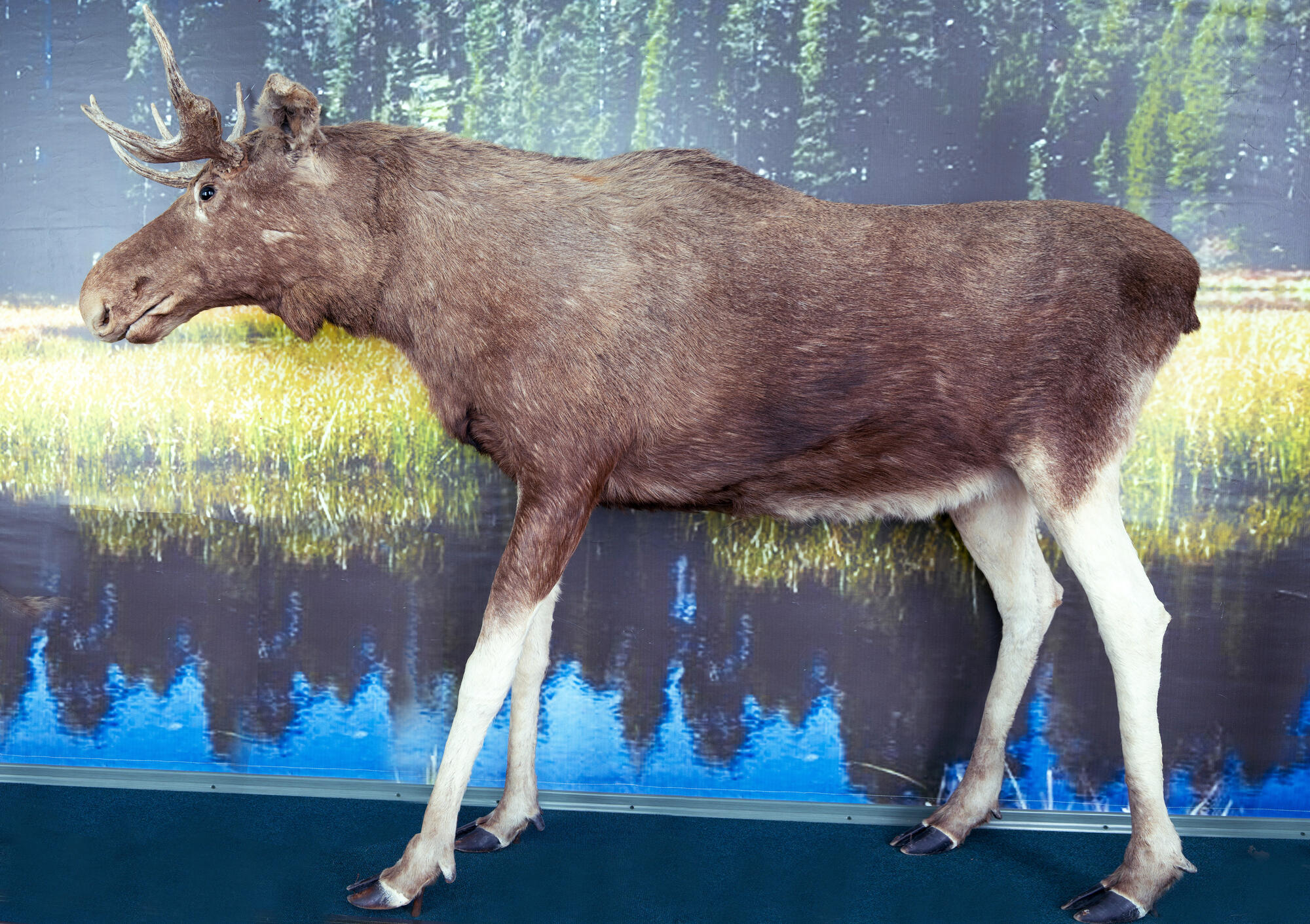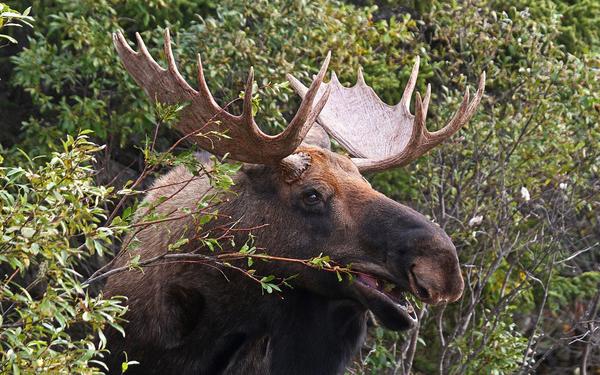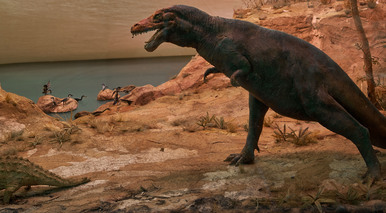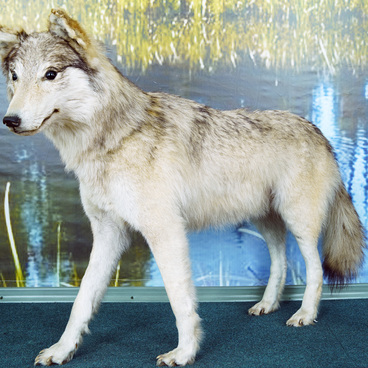In the collection of the Urazovo Local History Museum you can see a stuffed elk.
Elk is a genus of artiodactyl mammals, the largest representatives of the deer family. In the Belgorod Region, as well as in the Central Black Earth Region, the European elk lives. The mass of one individual can reach 350 kilograms.
Elks do not have specific eating and rest periods. In summer, the heat makes them nocturnal animals, in the daytime it drives them into glades, where the wind blows, into lakes and swamps, where they can hide up to their neck in water, or into dense coniferous forests, which provide some protection from insects. In winter, elks feed in the daytime, and at night they remain lying down almost all the time. In severe frosts, animals lie in loose snow so that only the head and withers stick out above it — this reduces heat transfer.
Elks feed on trees and shrubs and herbaceous vegetation, as well as mosses, lichens and fungi. In summer, they eat leaves: due to their growth, they reach them from a decent height. Elks also feed on aquatic and semi-aquatic plants and tall grasses. At the end of summer, they look for cap mushrooms, including fly agaric, which they use as a medicine. In September, they begin to bite off the shoots and branches of trees and shrubs and by November they almost completely switch to branch feed. The main winter food for elk includes: willow, pine, aspen, mountain ash, birch, raspberry.
Elk is a genus of artiodactyl mammals, the largest representatives of the deer family. In the Belgorod Region, as well as in the Central Black Earth Region, the European elk lives. The mass of one individual can reach 350 kilograms.
Elks do not have specific eating and rest periods. In summer, the heat makes them nocturnal animals, in the daytime it drives them into glades, where the wind blows, into lakes and swamps, where they can hide up to their neck in water, or into dense coniferous forests, which provide some protection from insects. In winter, elks feed in the daytime, and at night they remain lying down almost all the time. In severe frosts, animals lie in loose snow so that only the head and withers stick out above it — this reduces heat transfer.
Elks feed on trees and shrubs and herbaceous vegetation, as well as mosses, lichens and fungi. In summer, they eat leaves: due to their growth, they reach them from a decent height. Elks also feed on aquatic and semi-aquatic plants and tall grasses. At the end of summer, they look for cap mushrooms, including fly agaric, which they use as a medicine. In September, they begin to bite off the shoots and branches of trees and shrubs and by November they almost completely switch to branch feed. The main winter food for elk includes: willow, pine, aspen, mountain ash, birch, raspberry.





